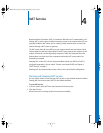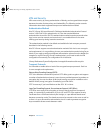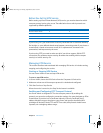
5
71
5 VPN Service
Virtual Private Network (VPN) is two or more computers or networks (nodes) connected
by a private link of encrypted data. This link simulates a local connection, as if the
remote computer were attached to the local area network (LAN).
VPNs allow users at home or otherwise away from the LAN to securely connect to it
using any network connection, such as the Internet. From the user’s perspective, the
VPN connection appears as a dedicated private link.
VPN technology also allows an organization to connect branch offices over the
Internet, while maintaining secure communications. The VPN connection across the
Internet acts as a wide area network (WAN) link between the sites.
VPNs have several advantages for organizations whose computer resources are
physically separated. For example, each remote user or node uses the network
resources of its Internet Service Provider (ISP) rather than having a direct, wired link to
the main location. VPNs also allow verified mobile users to access private computer
resources (file servers, etc.) from any connection to the Internet. Finally, VPN can link
multiple LANs together over great distances using existing Internet infrastructure.
This chapter describes VPN authentication method, transport protocols, and how to
configure, manage, and monitor VPN service. It does not include instructions for
configuring VPN clients for use of your VPN server.
LL2351.Book Page 71 Monday, September 8, 2003 2:47 PM


















